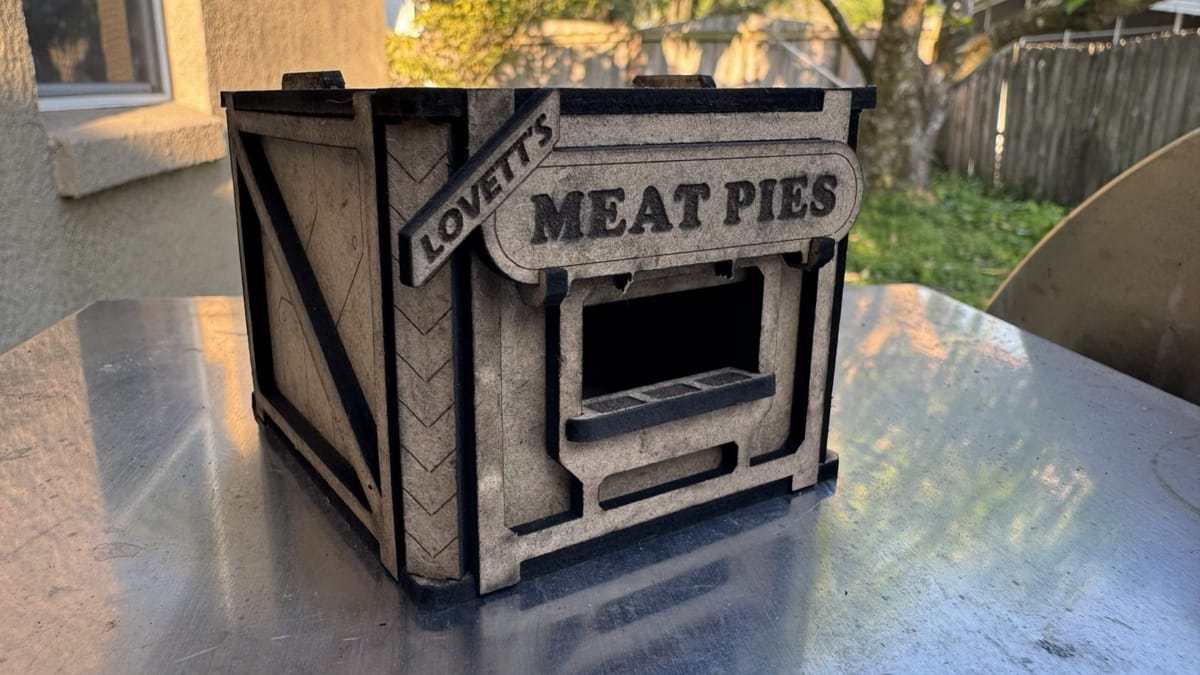
Like most tabletop enthusiasts, my hobby is ever-expanding. My office/game room/hobby space has as many hobby “things” as it does games. Paint, tools, 3d printers, laminators, foam cutters, and all the associated supplies and bits and bobs to turn plastic, wood, paper, and resin into game pieces, miniatures, and terrain are stuffed into every shelf and cabinet on hand. Naturally, I have always wanted to add a laser engraver to the mix and see what else can be achieved. Enter the Elegoo Phecda.

If you are not in the 3d printer world, Elegoo is a well-known company that produces affordable hobby-level resin and filament 3d printers. The Phecda is their first foray into the laser engraver space. The Phecda is offered with either a 10W or 20W laser, with all other features being the same. The machine I received for this review is the 20W unit. The Phecda features a 400x400mm engraving area with a 0.07mmx0.13mm focal point at speeds up to 25,000 mm/min. It also comes with an Air Assist pump and hose to blow smoke and debris away from the laser head while working.
Let’s set some context for my review. This is the first laser engraver I have used, and I do not run any business using it or any of my other tools. I am a hobby gamer and use tools like the Phecda to enhance my games or just make stuff that I think is cool. In light of my experience and use case, I cannot speak to the Phecda’s suitability for running a laser engraving/cutting business if that is what you are looking for.
Let’s get into it.
The Phecda arrived at my door in a thick cardboard box. The disassembled pieces are encased in layers of heavy foam to keep everything safe in transit, and my machine had no damage from shipping. Unpacking everything is quick and easy since there are relatively few pieces. The included assembly instructions were sufficient to get it put together without looking elsewhere for a guide. The frame is assembled at the corners, the x-axis is mounted, and all the motors and sensors need to be plugged in. The only slightly fiddly part was attaching the rod that spans the x-axis and drives the y-axis belt.
The Phecda comes with a WIFI antenna and has several options for control. You can connect directly to the machine with a cable and computer, set up a wifi connection, an app, or load files from a micro SD card. I can’t set up my desktop in the garage next to the laser so I opted for loading files via a micro SD card. This is where I ran into my first issue. The controller seems to be pretty slow to initially read the SD card and would refuse to load anything at all if I had more than five or six files saved to the card. If I deleted some files and kept it to just three or four, it would load fine. I’m not sure what the issue is but it’s pretty annoying to have to manage the card so closely.

Setting up files to cut or engrave can be done with any software that will output .nc g-code files. Elegoo recommends LaserGRBL or Lightburn. I tried both and preferred Lightburn, but the software isn’t part of this review. Your mileage may vary.
Once you have your material inside the work area and your file loaded, you need to set the laser head at your file’s origin. The Phecda has no end-stops or programmed “home” for the laser head. It has no idea where the laser head is relative to the 400x400mm workable area. When you turn the machine on, where the laser is currently located is now your origin. You can move the laser head freely by hand or use the touch screen and stepper motors to get the laser to the position that you want, but it’s a bit of guesswork. There is a handy feature on the touchscreen to turn the laser on to 0.5% – 10% power so you can see where the laser is going to hit to aid in this process. Once you have the laser where you want, you can reset the origin to that point. From there you will need to have the laser “frame” the piece you are about to run. The laser will turn on to a low power setting and outline the entire file you are about to execute. This is your final chance to reposition the material so that it’s lined up correctly.
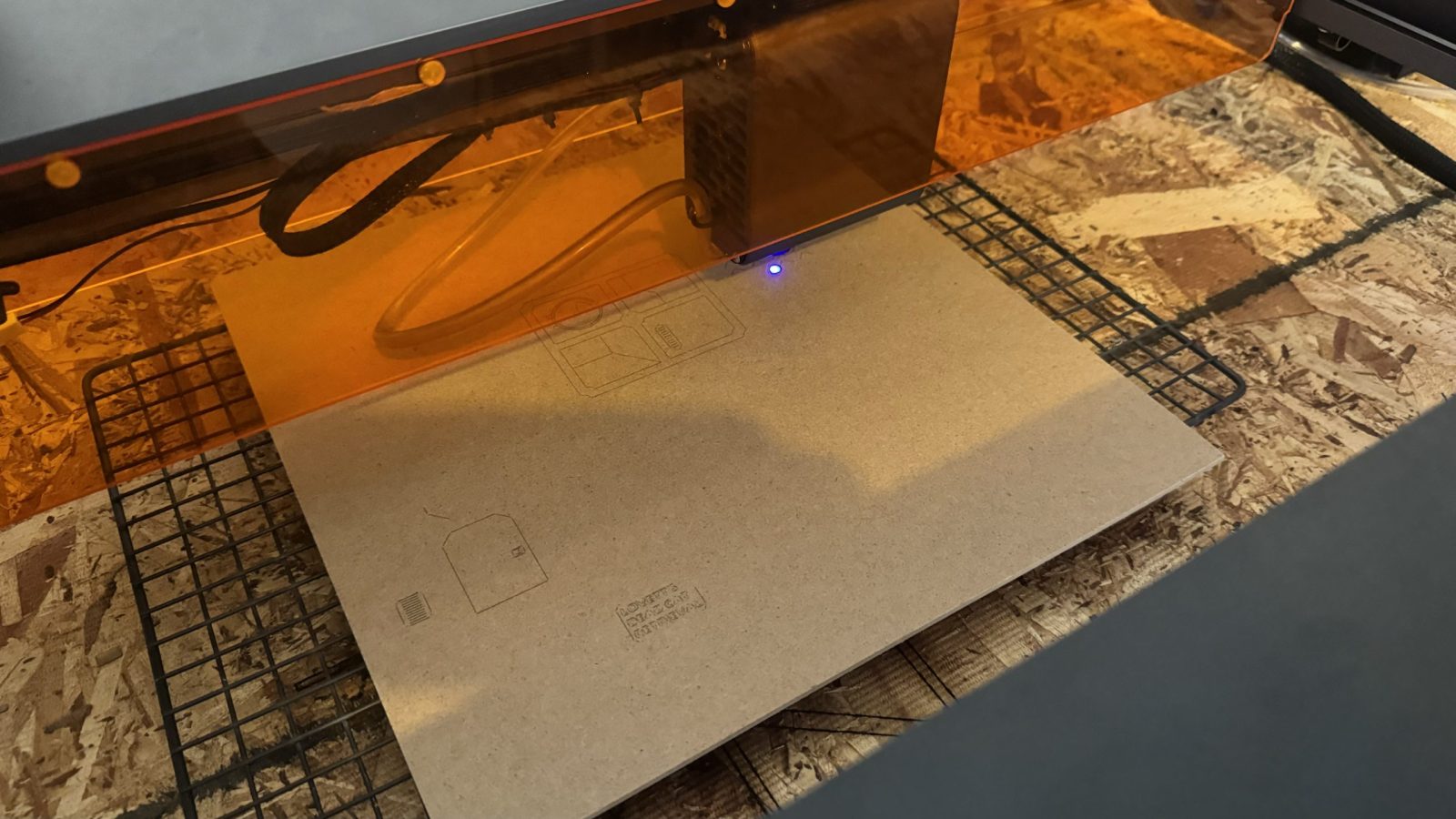
The whole process of aligning the laser to the piece is pretty quick and easy once you get the hang of it, and it makes sense that it has to be done that way. Due to the open frame design of the Phecda, there is no bottom, or anything really, to align your material to or ensure repeatable placement relative to the laser or any home position if there was one. This creates a whole host of issues if you want to set up multiple jobs at once or a repeatable design. Lasering your own grid as a reference surface and making set-up jigs is necessary if you want to advance beyond single-piece jobs.
The Phecda uses a diode laser and works with lots of different materials. For my testing, I cut and/or engraved with two different kinds of plywood, MDF board, cork, and cardboard. On their website, Elegoo links to a Google Sheet with references for power levels and speeds to cut/engrave different materials. These are an ok starting point but even the same material from a different manufacturer or batch can behave differently so you will need to run some material tests to determine the best power and speed levels.

The cork coasters that I made came out amazing. The Phecda has no problem burning in a nice dark image. For the Magic: The Gathering coasters in the picture, I had them all done at once. Because of the lack of reference for where to position each coaster in the machine, I had to first engrave the outline of all 5 coasters onto a piece of wood, then use those outlines to lay out the coasters before doing the actual engraving. Not hard, but those are the kinds of things you have to consider with this type of design.
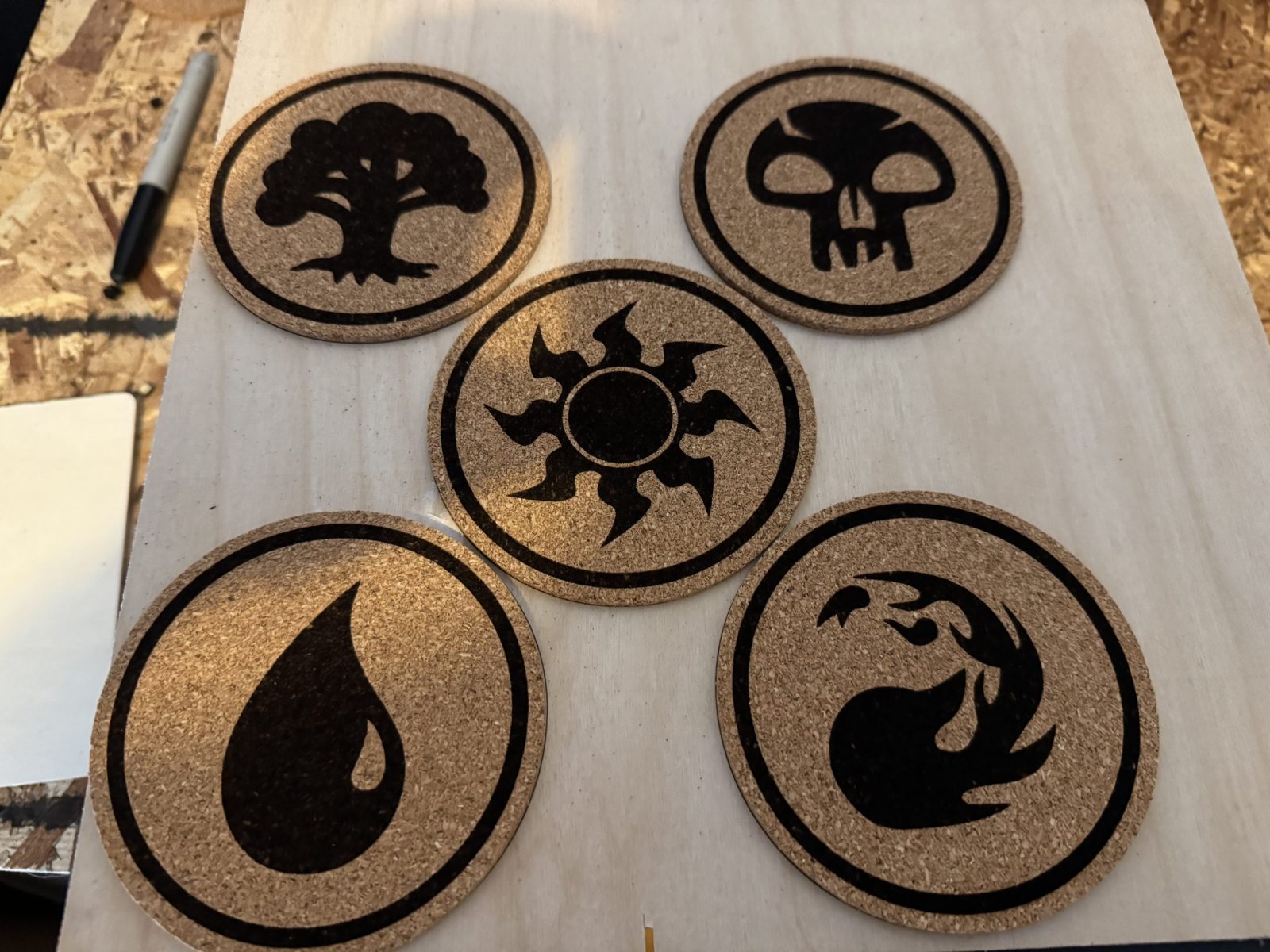
MDF was surprisingly hard to cut. This being my first laser, I can only assume it is due to the amount of glue in the material. I figured soft “wood” would cut like butter but it proved to be fairly tricky. I preserved though and was able to cut out the little building kit pictured. For reference, this small kit took about 32 minutes to complete.
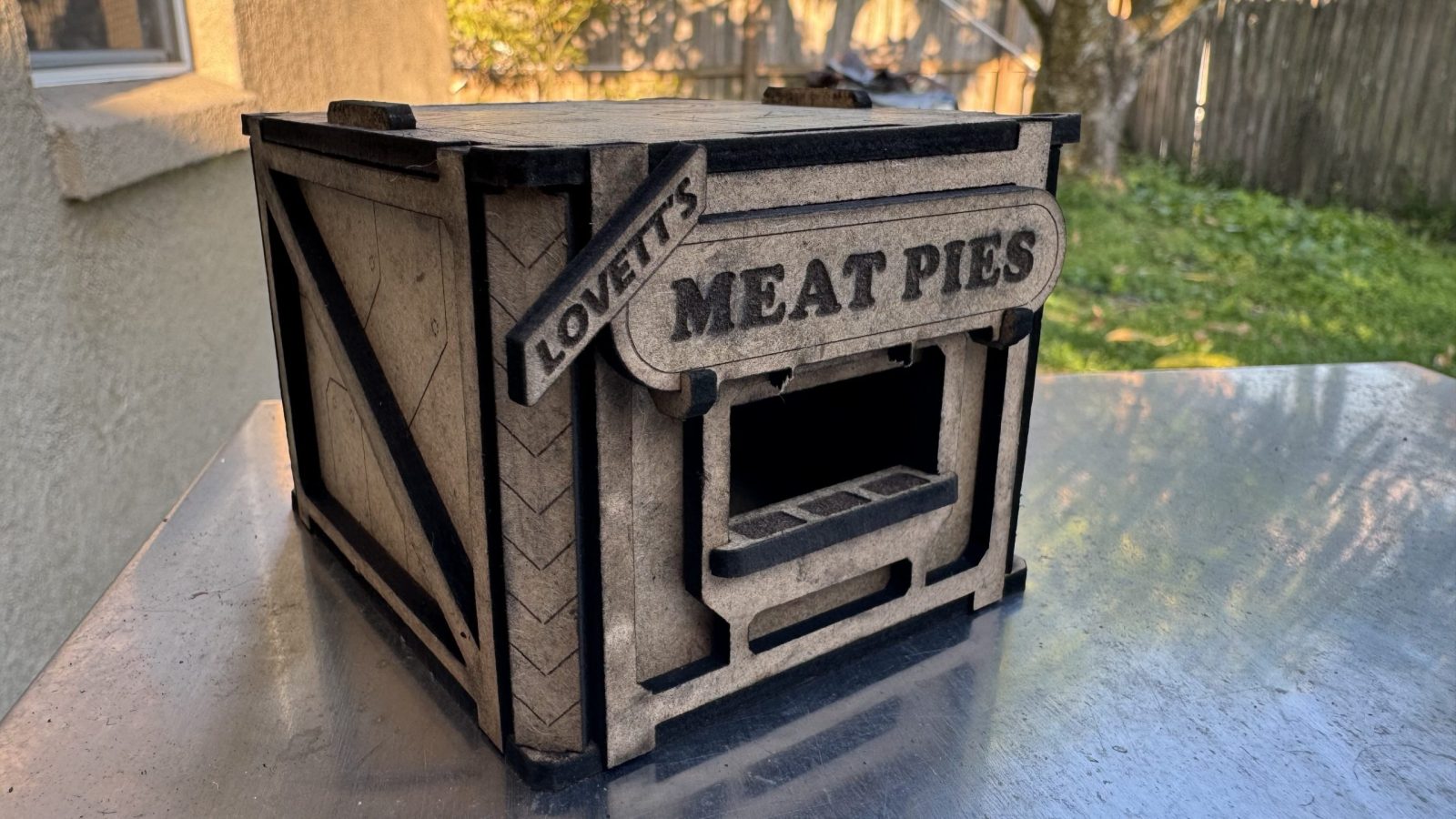
Cutting and engraving on birch plywood and mystery plywood from the craft store was pretty straightforward. Once I did some test prints and got the settings dialed in, the Phecda handled them without issue. I was pleasantly surprised by the legibility of the text on the character sheet and map of Middle Earth.
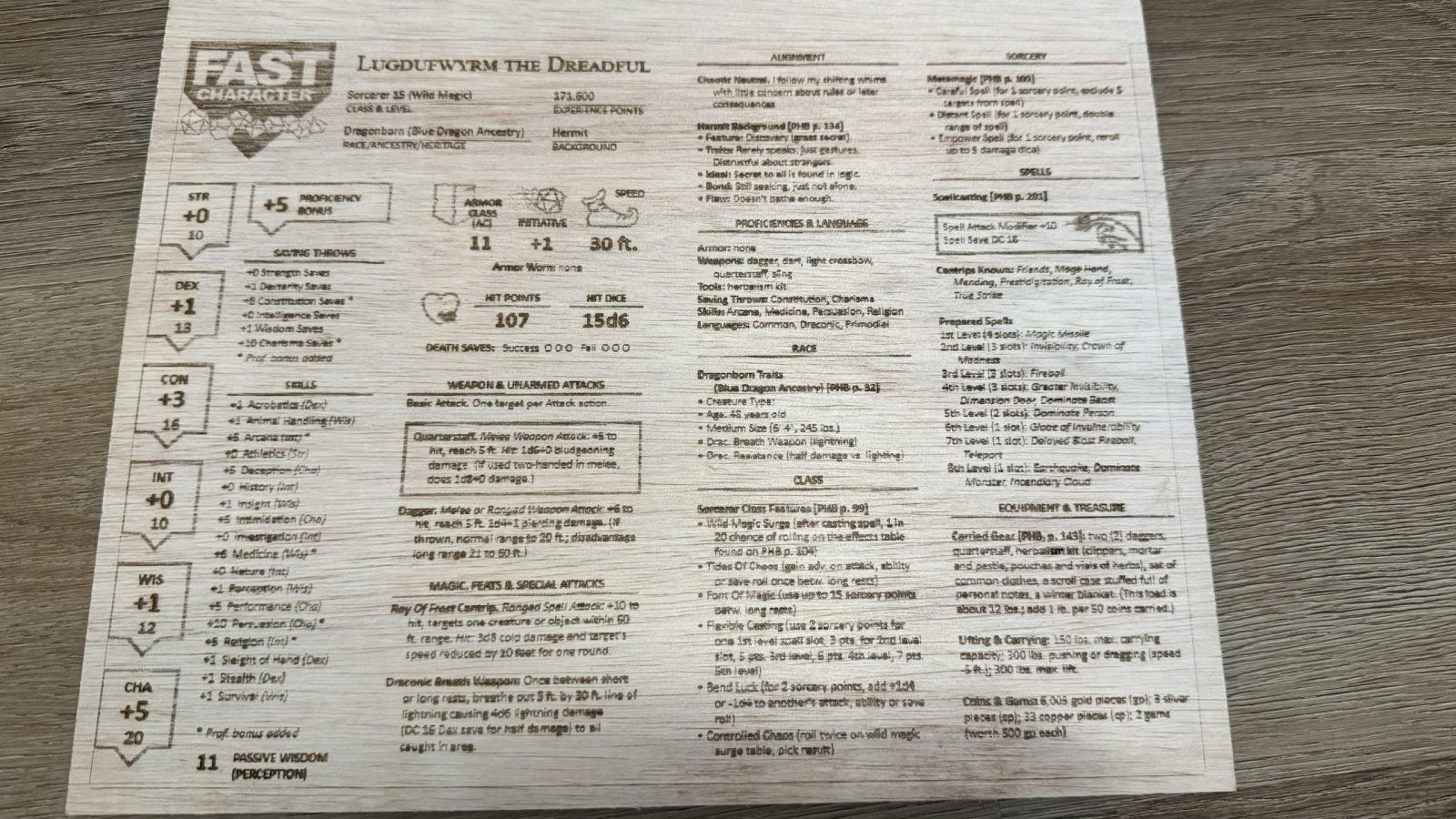
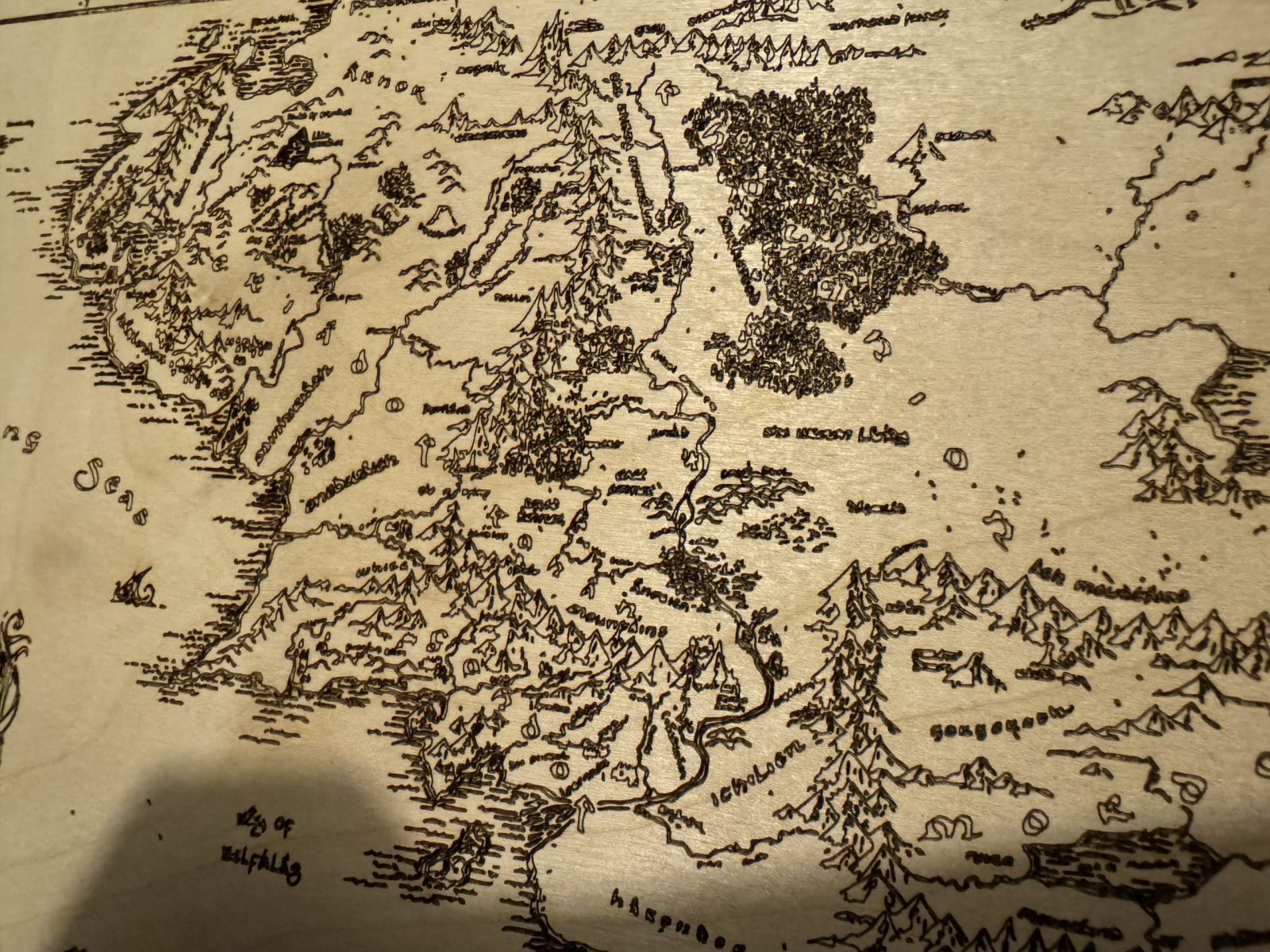
One thing to note here about cutting through materials is that you should have some kind of substrate to hold the material so that smoke can disperse out of the bottom and so the heat from the laser isn’t reflected right back onto the backside of your piece. Elegoo sells a honeycomb panel separately, but there is nothing included in the basic package. I stole a cookie cooling rack from my wife.
Safety
All of the cutting and engraving can produce a lot of smoke and fumes. The Phecda has a fan and filter mounted on top of the x-axis. The x-axis also has plastic walls on either side that help to block the light from the laser but also act as a guide for the smoke to funnel up to the filter. To be honest, I’m not sure this does anything at all. Especially when cutting, the smoke easily escapes the narrow x-axis channel, and the fan on the filter doesn’t seem powerful enough to pull the smoke into it. My garage smells like a campfire now and I had to open the door to vent the smoke out. Don’t plan to use this thing inside your house unless you have an enclosure and a serious ventilation system set up.
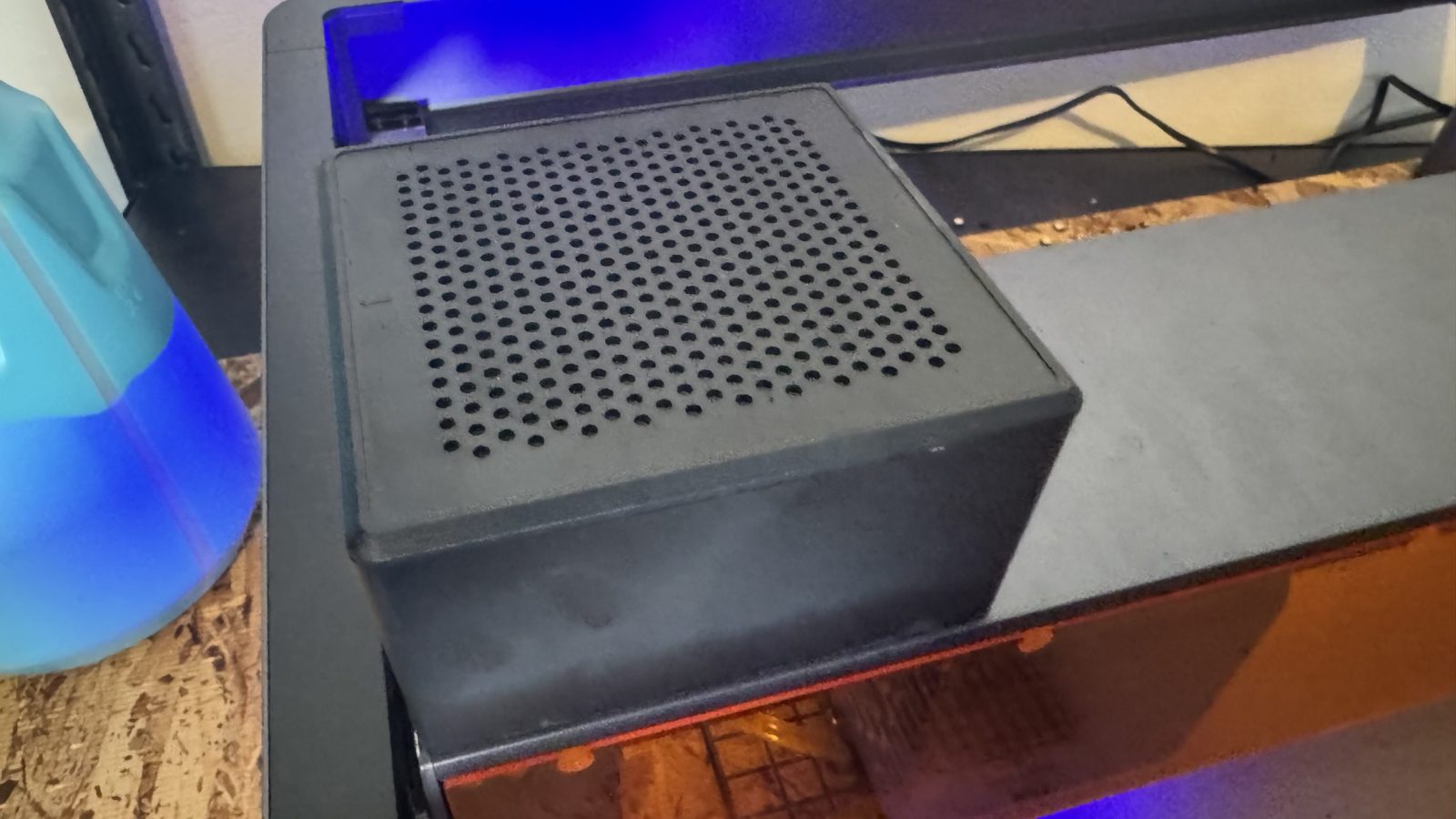
Other safety precautions and systems include laser wavelength-blocking safety glasses, a fire sensor, and a tilt sensor. The Phecda comes with a pair of glasses but they are not labeled in any way so it is impossible to verify they meet the requirements for laser safety. They do seem to work though. Unfortunately, one of the arms on my pair broke the first day that I was using them just from taking them on and off a few times. As for the fire sensor, I have no idea how that works or what it is supposed to do. I did have a fire, and the machine did not react at all. I was standing right in front of it and was able to quickly move the laser head out of the flames and turn it off but there were no alarms or automatic shut-offs. The tilt sensor is intended to shut the laser off if the machine were to somehow tip over so you don’t blast the unshielded laser across the room. For obvious reasons, I did not test that. Keep in mind that the Phecda is not an enclosed system so anyone in the room could be exposed to light from the laser while it is operating. Elegoo sells an enclosure separately, but it is not included in the standard package.
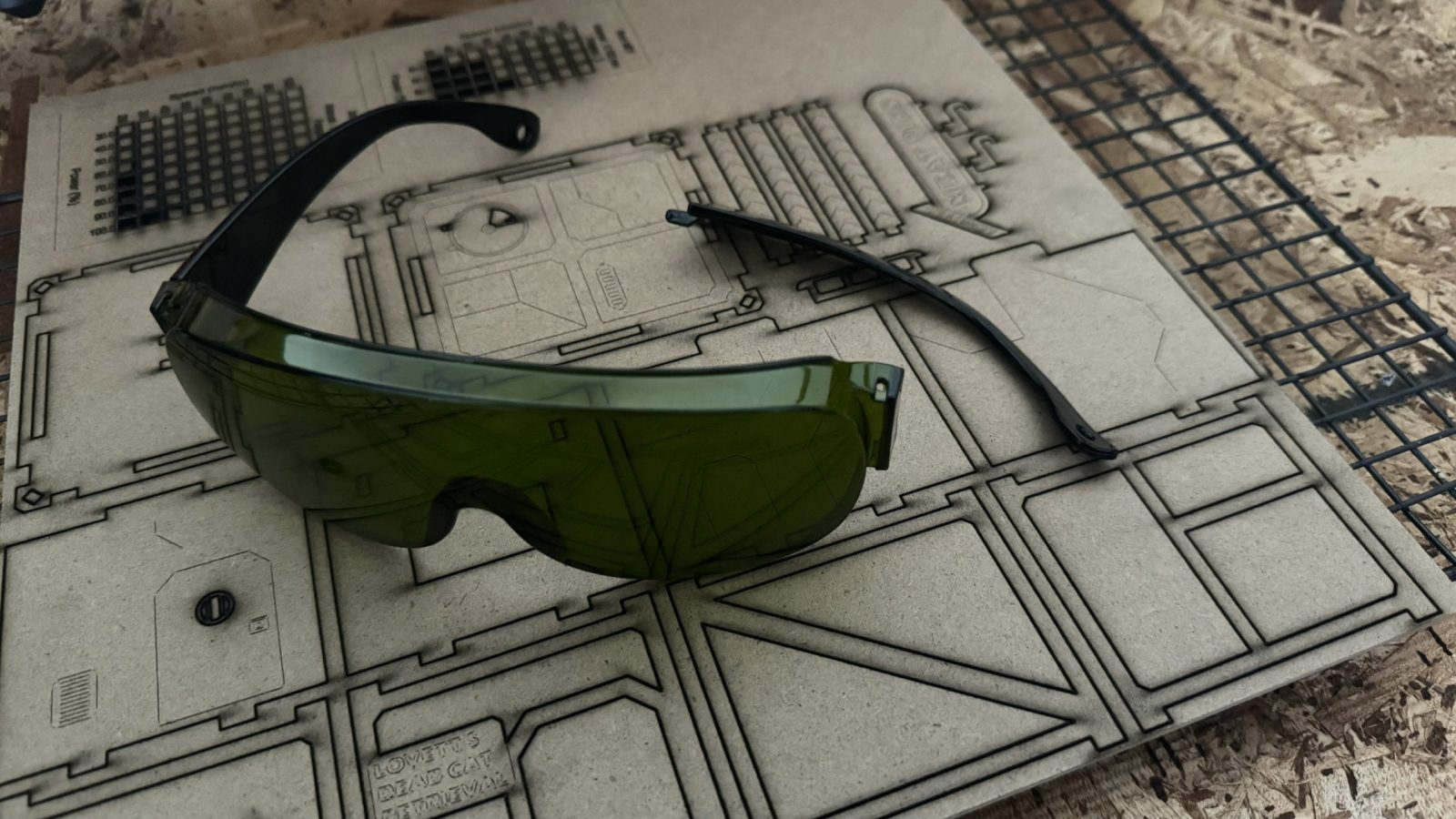
How much are we talking about?
At the time of writing, the 20W Phecda retails for $450 and comes with a 12-month warranty for the PCB, motors, laser head, and power adaptor. A 6-month warranty on the fans, and a 3-month warranty on the belts and electrical wiring. When you compare that to other companies with similar features, it’s very competitive. When compared to “professional” and enclosed systems, it’s downright cheap.
Assessment
From setup to running my first job was really quick. A determined individual should be up and running the same day their machine arrives. There is an official Discord channel with other users that is very helpful if you get stuck. The machine itself is really very simple and does what it is supposed to do. Any issues you run into are likely due to improper settings for the given material rather than any issue with the Phecda. Things like images not being dark enough or the laser not cutting all the way through are independent of the machine itself.
For a budget system that can enhance my other hobbies without too much fuss, I am impressed with the Elegoo Phecda. Despite a few quarks and missing features you’d find on more expensive machines, it does what I want it to do. Having to monitor it so I don’t burn my house down is a bit of a bummer but with experience and proper settings, the need to constantly supervise it while running will diminish.

Elegoo Phecda
Good
The Elegoo Phecda 20W laser engraver does exactly what it is supposed to do and at a price that is hard to pass up. It may not be the safest hobby tool in my growing arsenal but it will be getting lots of use.
Pros
- Excellent price
- Easy to operate
- No proprietary software
Cons
- The fire sensor didn’t appear to work
- Manual alignment of laser head and workpiece
- The smoke filter is useless
